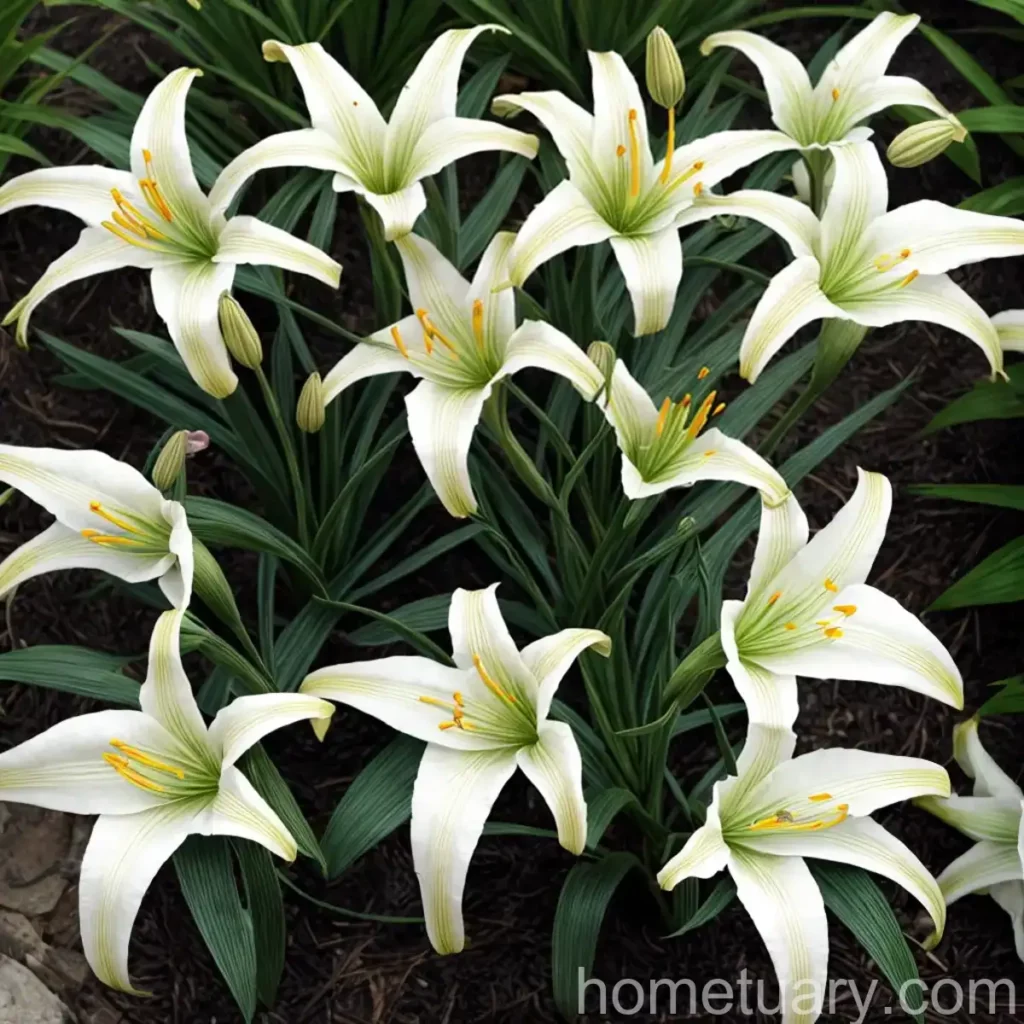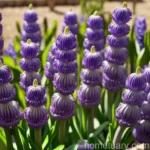St. Bernard’s Lily (Anthericum liliago): A Complete Guide to Cultivation and Maintenance
St. Bernard’s lily, scientifically known as Anthericum liliago, is a stunning flowering plant that holds a special place in the world of ornamental gardening. Its elegant appearance and relatively low maintenance requirements make it a popular choice among gardeners and landscapers. In this comprehensive guide, we will delve into every aspect of St. Bernard’s lily, from its origins and characteristics to its care requirements, propagation techniques, and common pests and diseases. By the end of this article, you will have all the information you need to successfully cultivate and enjoy the beauty of St. Bernard’s lily in your own garden or landscape.
Table of Contents
- What is St. Bernard’s Lily?
- Key Takeaways
- Culture
- Uses
- Water
- Sunlight
- Fertilizer
- Soil
- Pruning
- Propagation
- Container Cultivation
- Popularity
- Common Diseases
- Disease Diagnosis
- Common Pests
- Botanist’s Tips
- Fun Facts
- Links to External Resources
What is St. Bernard’s Lily?
St. Bernard’s lily, or Anthericum liliago, is a perennial herbaceous plant belonging to the Asphodelaceae family. It is native to various regions across Europe, where it thrives in meadows, woodland edges, and rocky slopes. The plant is characterized by its narrow, strap-like leaves and delicate, star-shaped white flowers that bloom in dense clusters atop slender stems. St. Bernard’s lily adds a touch of elegance to gardens and landscapes, making it a prized ornamental plant.
Key Takeaways – St. Bernard’s Lily (Anthericum liliago)
Before we dive into the intricacies of cultivating and caring for St. Bernard’s lily, it’s essential to grasp the key takeaways that will guide our discussion:
- St. Bernard’s lily is a perennial herbaceous plant known for its narrow, strap-like leaves and clusters of delicate white flowers.
- It is native to various regions in Europe and thrives in meadows, woodland edges, and rocky slopes.
- This plant is favored for its ornamental appeal and relatively low maintenance requirements.
- In cultivation, St. Bernard’s lily requires well-drained soil, ample sunlight, and regular watering to thrive.
- Propagation can be achieved through division of the rhizomes and seeds.
Now that we have a general understanding of St. Bernard’s lily, let’s explore the specific cultural requirements and care guidelines that will ensure its successful cultivation and maintenance.
Culture
Uses
St. Bernard’s lily holds several uses within horticulture and landscaping due to its aesthetic and ornamental qualities. Some of its primary uses include:
- Ornamental Planting: The plant is mainly cultivated for its attractive flowers, which make it a popular choice for ornamental borders, rock gardens, and naturalized planting schemes.
- Cut Flower: The delicate white blooms of St. Bernard’s lily make it suitable for cut flower arrangements, adding a touch of elegance to floral displays.
Water
Proper watering is crucial for the health and vitality of St. Bernard’s lily. As with most plants, a balance must be struck to avoid both waterlogging and drought stress. Here are some essential guidelines for watering St. Bernard’s lily:
- Watering Frequency: Provide consistent moisture, especially during the growing season. Water deeply when the top inch of soil becomes dry.
- Avoid Waterlogging: Ensure that the soil is well-drained to prevent waterlogging, which can lead to root rot and other issues.
Sunlight
Sunlight is an essential factor that directly influences the growth and blooming of St. Bernard’s lily. Adequate sunlight ensures robust growth and prolific flowering. Consider the following sunlight requirements:
- Full Sun: St. Bernard’s lily thrives in full sunlight, requiring a minimum of 6-8 hours of direct sunlight daily for optimal performance.
- Partial Shade: While it prefers full sun, the plant can tolerate partial shade, especially in hot climates, provided it still receives a significant amount of direct sunlight.
Fertilizer
Appropriate fertilization plays a vital role in promoting healthy growth and abundant blooms in St. Bernard’s lily. Consider the following fertilizer guidelines:
- Balanced Fertilizer: Use a balanced, all-purpose fertilizer during the growing season to provide essential nutrients for strong growth and flowering.
- Application Frequency: Apply fertilizer in early spring as new growth emerges, and again in mid-summer to support continued growth and blooming.
Soil
The soil in which St. Bernard’s lily is planted has a significant impact on its overall health and performance. Consider the following soil requirements for optimal cultivation:
- Well-Drained Soil: Ensure that the planting site has well-drained soil to prevent waterlogging, which can be detrimental to the plant’s health.
- Soil pH: St. Bernard’s lily thrives in slightly acidic to neutral soil with a pH range of 6.0-7.0.
Pruning
Pruning is an essential aspect of St. Bernard’s lily maintenance, contributing to its overall health, appearance, and vigor. Follow these pruning guidelines for optimal care:
- Deadheading: Remove spent flowers promptly to encourage continuous blooming and prevent the plant from expending energy on seed production.
- Spring Cleanup: In early spring, remove any dead or damaged foliage to promote new growth and maintain a tidy appearance.
Propagation
The propagation of St. Bernard’s lily can be achieved through various methods, each offering its own advantages and considerations. Consider the following propagation techniques for successful reproduction:
- Division: Divide mature clumps every few years in early spring to propagate St. Bernard’s lily and rejuvenate the plant.
- Seed Propagation: Collect ripe seeds in late summer and sow them in a well-prepared seedbed for germination the following spring.
Container Cultivation
Popularity
St. Bernard’s lily has gained popularity as a container plant due to its elegant appearance and relatively low maintenance requirements. When cultivated in containers, the plant adds a touch of sophistication to patios, balconies, and outdoor living spaces.
Common Diseases
While generally resilient, St. Bernard’s lily can be susceptible to certain diseases, which, if left unchecked, can compromise the plant’s health and vitality. Some common diseases to watch out for include:
- Powdery Mildew: A fungal disease that appears as a white, powdery coating on the leaves, typically caused by poor air circulation and high humidity.
- Leaf Spot: Characterized by dark, water-soaked lesions on the foliage, often caused by fungal or bacterial pathogens.
Disease Diagnosis
Prompt and accurate diagnosis of plant diseases is crucial for effective management and control. If you suspect that your St. Bernard’s lily is affected by a disease, consider the following steps for disease diagnosis:
- Visual Inspection: Examine the plant for any abnormal symptoms, such as discolored or spotted foliage, stunted growth, or wilting.
- Consultation: Seek the expertise of a plant pathologist or horticulturist to accurately identify the disease and determine the appropriate course of action.
Common Pests
St. Bernard’s lily can attract certain pests that may feed on its foliage or cause other forms of damage. Recognizing and addressing these pests promptly is essential for preserving the plant’s health. Some common pests to be aware of include:
- Aphids: These small, soft-bodied insects can gather on the undersides of leaves and cause distortion or discoloration of the foliage.
- Spider Mites: These tiny pests can suck sap from the leaves, causing stippling and webbing, and are often prevalent in hot, dry conditions.
Botanist’s Tips
As a plant scientist, I would like to share some key tips for successful cultivation and care of St. Bernard’s lily based on established botanical knowledge and research:
- Mulching: Apply a layer of organic mulch, such as compost or shredded bark, around the base of the plant to conserve moisture and suppress weed growth.
- Supportive Structures: Consider providing support, such as stakes or rings, for taller varieties of St. Bernard’s lily to prevent lodging and maintain an upright growth habit.
Fun Facts
Before concluding our discussion, let’s explore some intriguing and lesser-known facts about St. Bernard’s lily:
- St. Bernard’s lily is also known by the common names of “St. Bernard’s lily-of-the-valley” and “St. Bernard’s lily-of-the-field.”
- In certain regions, the plant holds cultural and folklore significance, often associated with themes of purity, tranquility, and spiritual symbolism.
Links to External Resources
For further information on St. Bernard’s lily and related topics, consider exploring the following resources:
- Royal Horticultural Society – Anthericum liliago
- Missouri Botanical Garden – St. Bernard’s Lily
- University of Florida IFAS Extension – Anthericum liliago
In conclusion, St. Bernard’s lily, or Anthericum liliago, stands as an enchanting and versatile plant that holds immense appeal in the world of ornamental gardening and landscaping. By embracing the cultural requirements and care guidelines outlined in this comprehensive guide, you can cultivate and enjoy the timeless beauty of St. Bernard’s lily in your own garden or landscape, creating a captivating display of elegant white blooms and striking foliage.
Remember, successful gardening stems from a combination of knowledge, patience, and an appreciation for the natural world. May your journey with St. Bernard’s lily be one filled with joy, discovery, and a deep connection to the wonders of the botanical realm.















